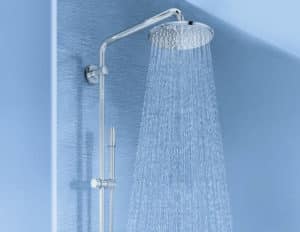Basic Water Heater Anatomy: An Ounce of Prevention

With the holidays approaching, a few things will make your family and guests as grumpy as being without hot water for a shower when they want it. Water heaters, according to the Santa Cruz plumbing experts (which are powered by gas in about half the homes in the United States and by electricity in the other half), are hardworking members of your heating/cooling equipment.
Water Heater Anatomy
 A gas water heater differs from an electric model because it has a vent pipe (at the top of the tank), and a gas supply pipe with a supply valve (stop). Whether your water is heated by gas-fired or electric heating elements, both types of water heaters have certain parts in common and a couple of differences.
A gas water heater differs from an electric model because it has a vent pipe (at the top of the tank), and a gas supply pipe with a supply valve (stop). Whether your water is heated by gas-fired or electric heating elements, both types of water heaters have certain parts in common and a couple of differences.
A gas unit must be vented, so it will have a vent pipe, usually located at the top of the heater. The pipe vents into a chimney or (with more recent models) through the wall. An electric model has no vent.
The gas unit also has a combustion chamber inside the bottom of the unit; electric water heaters usually have heating elements inside the top and bottom of the tank.
Warm water is able to dissolve minerals that are not soluble in cold water. For this reason, the hot water in the tank is corrosive (a good reason not to drink hot water from the tap). Inside both the electric and the gas water tanks are rods, called sacrificial anodes, that act like mineral magnets. They will corrode so that the mineralized water will not go to work, corroding the tank and shortening its life. Some homeowners will have the anodes replaced after a few years to lengthen the life of the water heater.
Other parts shared by gas and electric models include the drain valve. This is used to drain the water in the tank. Because the tank collects sediment from the water at its base, it’s a good idea to drain the tank every couple of years.
You will also want to pay attention to the pressure relief valve. This valve will automatically discharge water from the tank should pressure build up inside from an overheating element. These valves go bad on occasion, and you can replace yours with an exact duplicate part.
We Take Care of All Your Plumbing Needs.
Request Service
Specials & Discounts
* Call to Redeem or Present this Coupon at the Time of Your Service

Recent Posts












